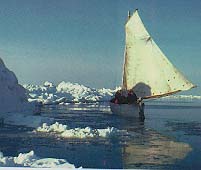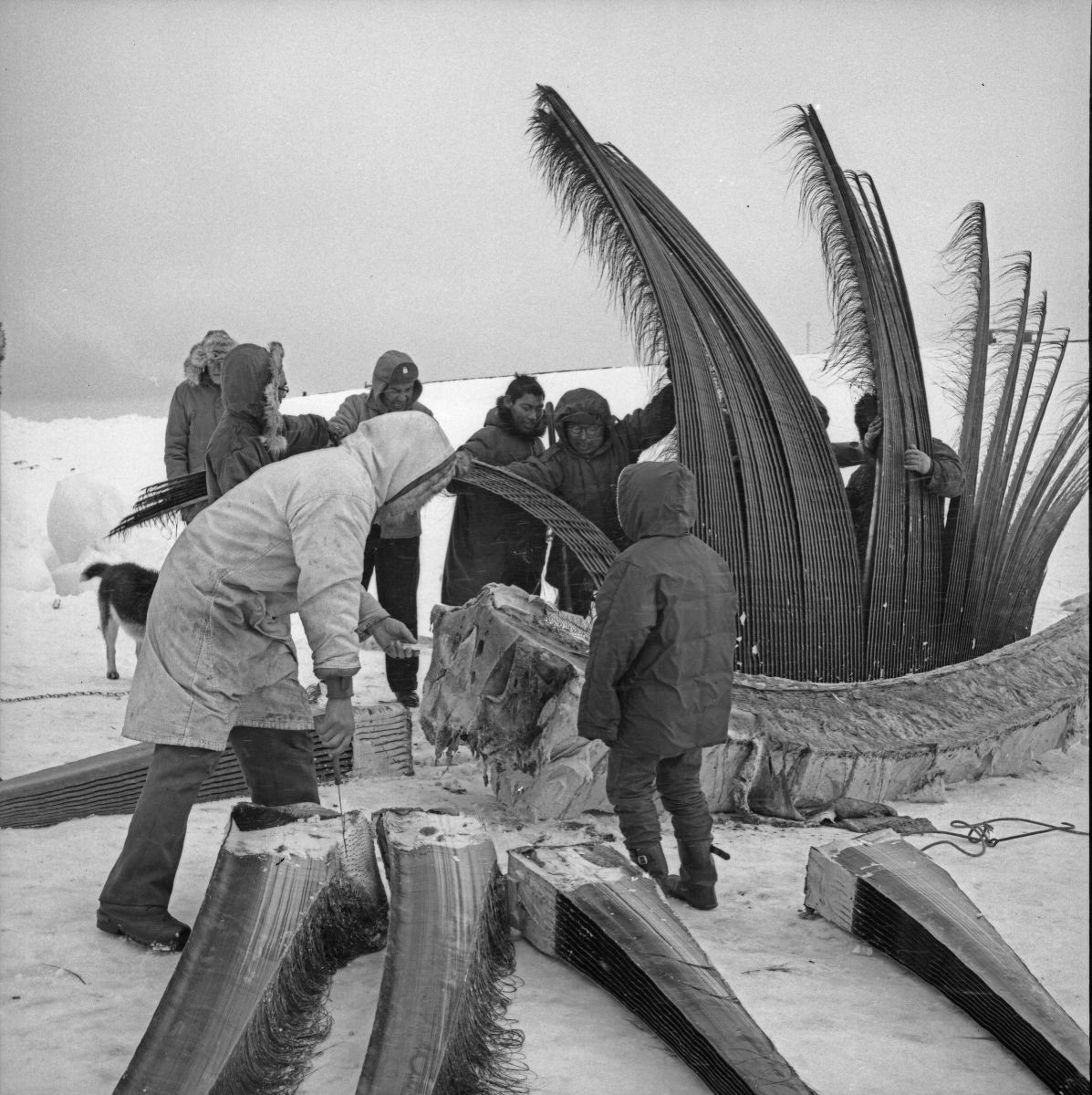Maps: All Whales: Subsistence Use

NOTES:
Bering Strait CRSA area around St. Lawrence Is. – Straight western edge represents the end of the page on which data was drawn in the original source.
Cenaliulriit CRSA area near Emmonak – The right angle represents the edges of USGS base maps used in the documentation process.
Unlike walrus and seals, the Bering Straits CRSA Resource Inventory did not show beluga subsistence use in the Chukchi Sea. It is, however, documented that belugas are harvested out to 50 miles in the Shisharef area (ADFG 1985).
Cultural Practices: Bowhead

Central Yup’ik: Arveq
St. Lawrence Island Yupik: Aghvepik
Inupiaq: Agviq
Scientific: Balaena mysticetus
Whaling is an organized and cooperative enterprise from the preparation for the hunt to the hunt itself and finally the distribution of the whale to the captain, families and the community after it is taken.1 Bowhead whales are used for a variety of purposes providing mangtak (St. Lawrence Island Yupik word for the outer layer of whale blubber with the skin attached to it), meat, oil and baleen.
Hunters know that bowhead whales are sensitive to noise when traveling alone or in small groups. Sails are used to power whaling boats on St. Lawrence Island.2 Before modern materials, sails were made from split walrus stomachs.3
Sometimes a whale will swim along the left side of a whaling boat for up to an hour. Because the harpoon is set up on the right side, the whale cannot be struck. “This phenomenon is known as angyi (from the Yupik root ang-, which refers to giving something), meaning that the whale is considering giving itself to the whalers. (The same root is found in the Yupik word agyaq (skinboat), referring to its use in pursuing the gift of the whale....)”4
Cultural Practices: Beluga

Central Yup’ik: Cetuaq
St. Lawrence Island Yupik: Puugzaq
Inupiaq: Sisuaq
Scientific: Delphinapterus leucas
The Bering Sea stock of belugas is usually hunted in the spring or fall as they migrate along the coast. In some locations, however, belugas could be available in other times of the year depending on ice conditions.5 Belugas are both very vocal and sensitive to sound, which hunters take into account when pursuing them. Hunters must be careful not to make sudden movements or too much noise when searching for belugas. When using wooden or aluminum boats, hunters will press their ears to the bottom of the boat or to one end of a wooden paddle in order to hear the vocalizations that the belugas make and to locate pods under water.6
When a beluga is taken, the meat is shared throughout the region. Anyone who desires a share can benefit from the harvest.7 Muktuk (Central Yup’ik and Inupiaq word for the outer layer of blubber with the skin attached to it) is a delicacy.8
Important Whale Habitats:
Bowhead Whale
Beluga Whale




